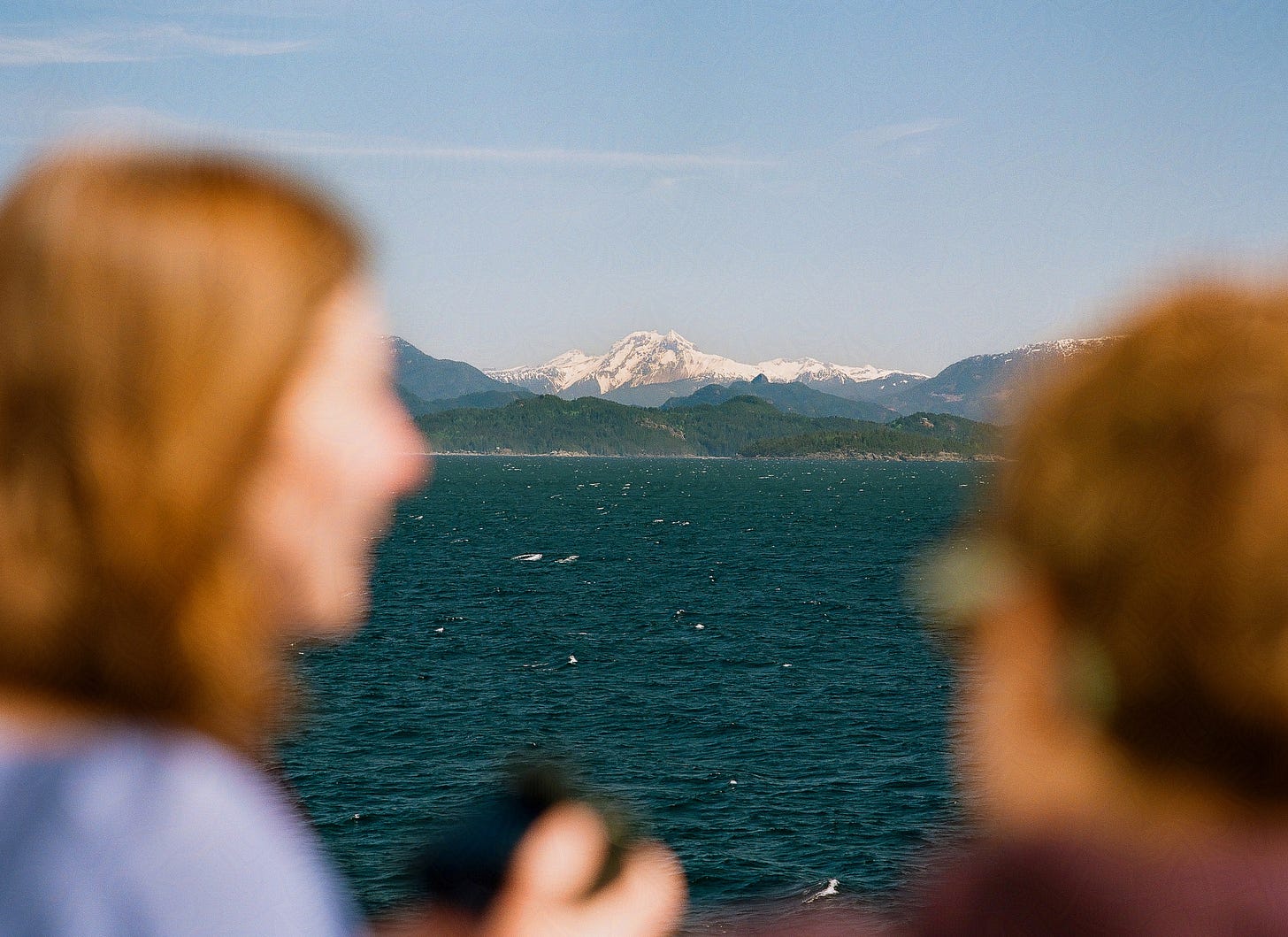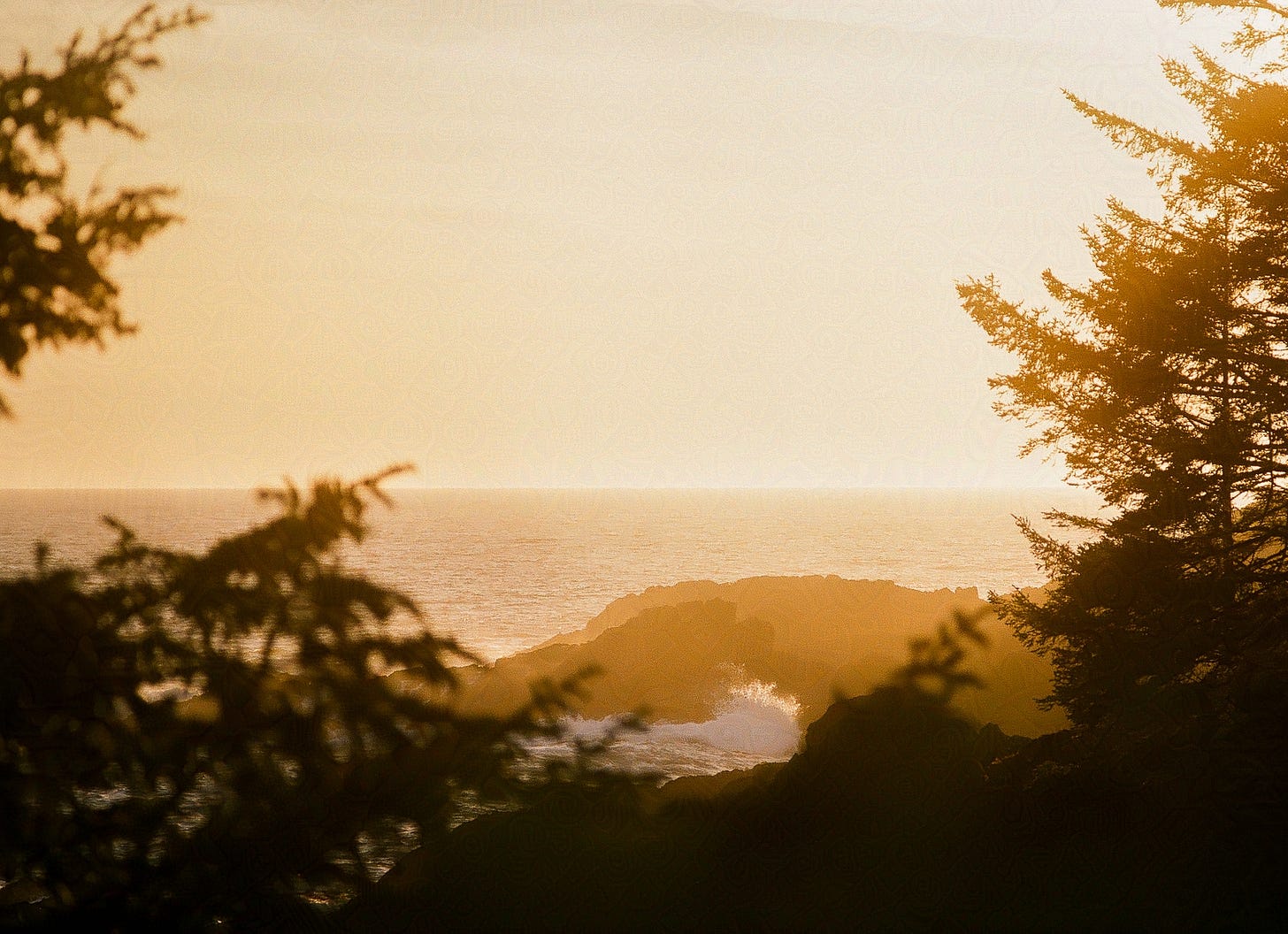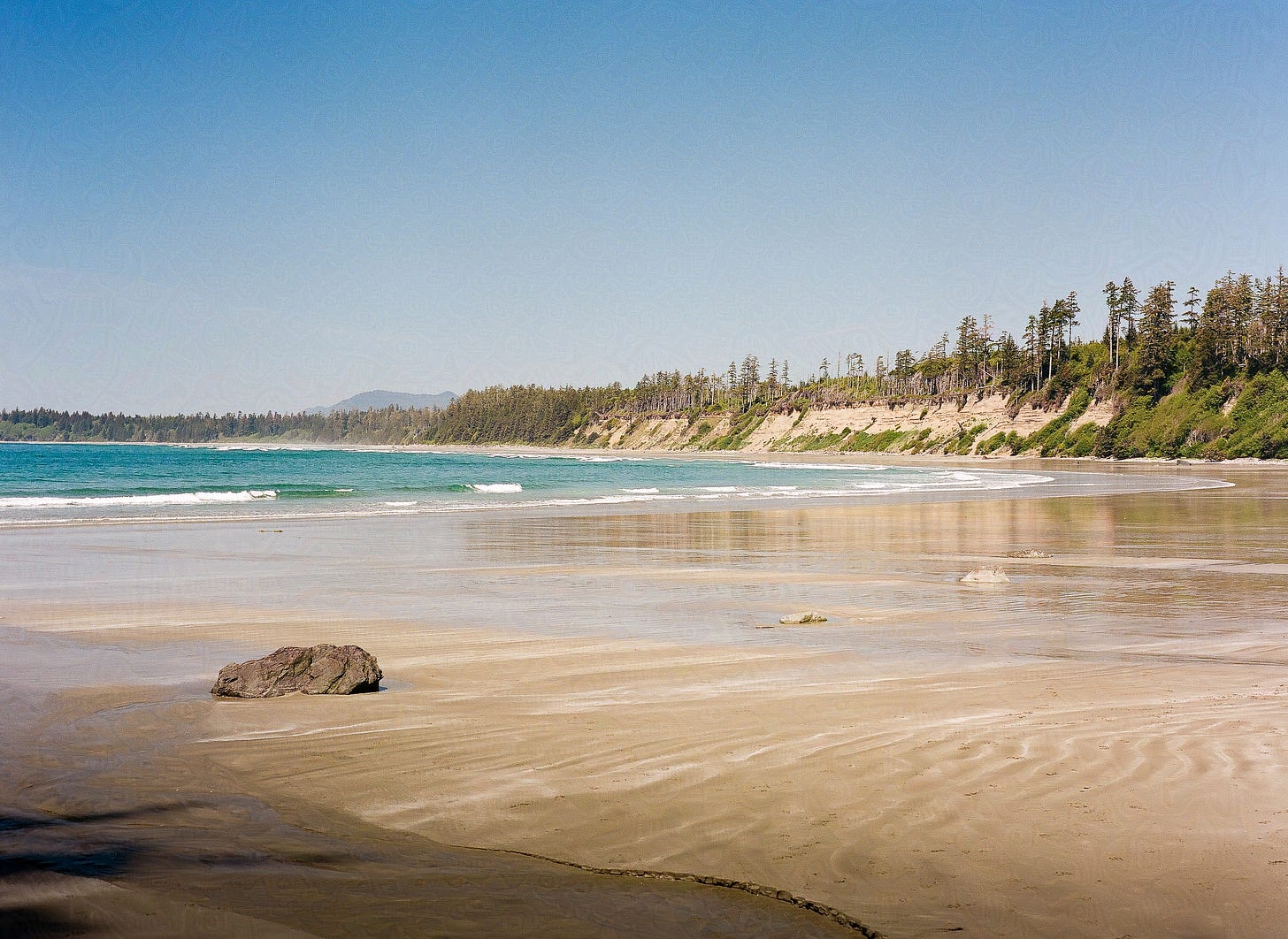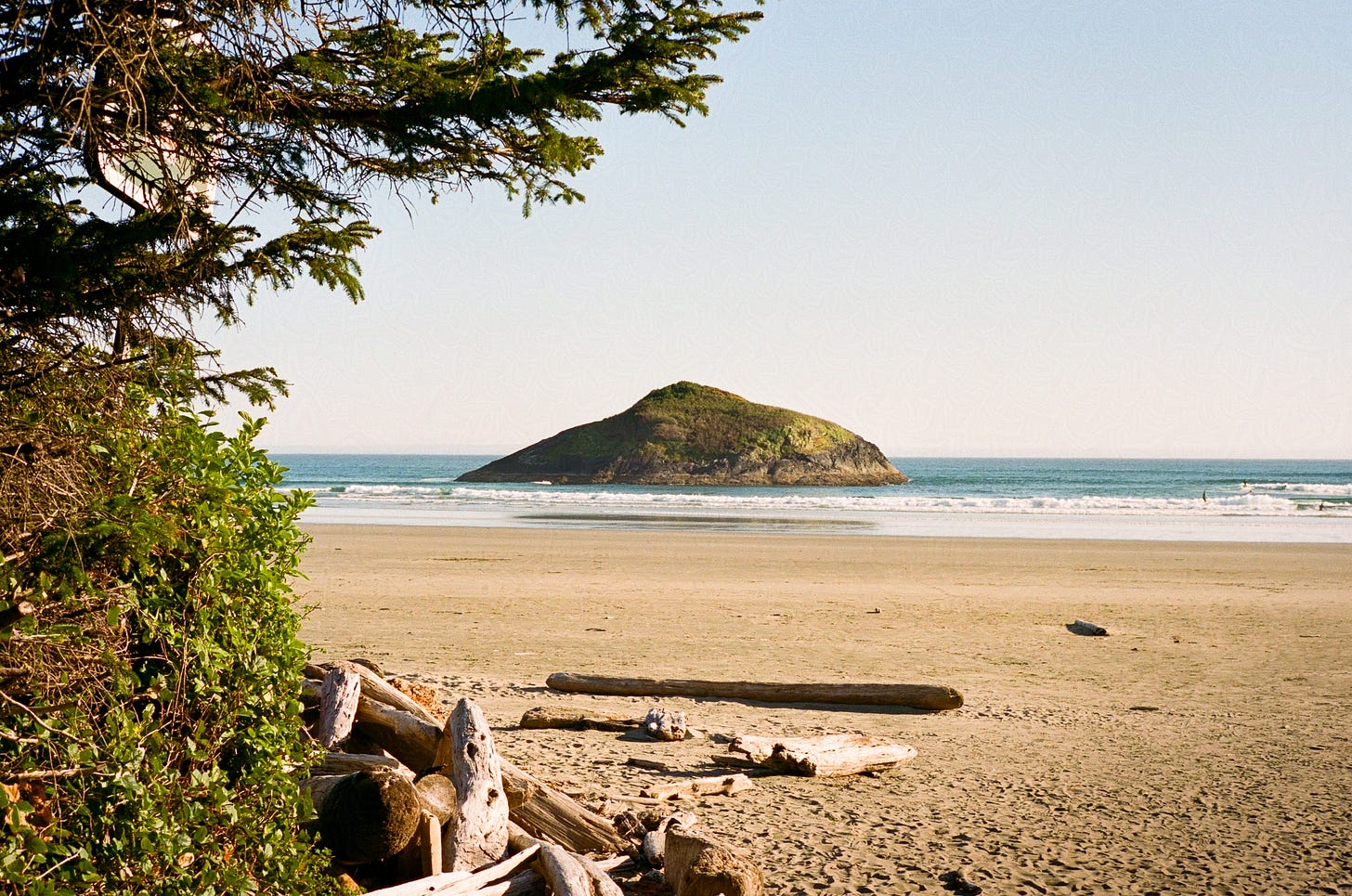Landscape photographs from Vancouver Island (Part 1)
A selection of essays and photographs from road tripping the island.
This past May, I traveled to Vancouver Island for the first time. A friend and I drove over from Vancouver with the idea that we should get to see some beautiful nature, photograph, paint and otherwise have a good time. This was in some ways meant to be a vacation, and in other ways it was to be work.
I had it in my head that I’d try to challenge myself with more landscape photography. I’m at home out on the streets, but I have a lot of growth to look forward to in nature. Luckily, I’d had a bit of a warmup the week before while staying out in the countryside.
I don’t consider myself a landscape photographer. But I am, however, committed to my craft. I just try not to hold myself back when creating. I’ll often make a photo that I’d never publish — just so I can simply participate in the act of making it. I recently told a friend and fellow photographer that I have no hesitance in taking the clichéd types of photos that pervade Instagram. You know the type. They’re vibey and nostalgic. But sometimes I want to try my hand. I don’t need to publish it, but I do need to know that I can do it.
So my friend Amy and I set out to see the island. And maybe — hopefully — we could capture some of its magic. I know for sure that we were barely aboard the ferry to Nanaimo before she was setting up an easel on the passenger seating deck. So while she did that, I loaded a roll in my camera and headed upstairs to the outdoor deck.
Empty waters
Standing on top of a boat looking at the beautiful scenery in the distance is a pretty great thing to be doing. It’s exciting. And when I’m excited, I take a lot of photos. I burned half my first roll of Kodak Gold in the first couple of minutes. It’s just… I felt like my compositions were too empty.
I wanted this mountain in the distance, but the expanse of open water provided no objects to reference. So I decided to shoot it more like a street photo. I framed up the mountain between a family of fellow nature-gawkers and fired the shutter.
For this photo, I used a circular polariser to cut down on reflected light coming off of the water from the midday sun. Without the intense glistening on the surface, the water takes on this appearance of extreme depth. It makes the water into an even more formidable obstacle between the observer(s) and this mountain.
The result is nice. It isn’t striking in grand scale, but it tells a little story from the water.
Perched above the rocks
When you arrive in Ucluelet, if you keep driving, you’ll eventually run out of land when the peninsula ends. On the south side of the peninsula is a circular trail called the Ucluelet Lighthouse Loop. It weaves through the trees above a rocky and treacherous shoreline while occasionally offering incredible views of the waves crashing below.
I really have to say, I don’t think I’ve ever been in a place like this before. At least, it was never at the right times.
The colour of the setting sun’s light paired with the ocean mist in the air produced an incredible effect. I can say — it felt otherworldly. Everything the light could touch became bathed in warmth. This was only dispelled when we turned back into the forest to follow the trail. The foliage preserved the coolness of dim light while we walked onward.
Each opening on the trail offered a new viewpoint and a door into a world ostensibly bathed in an almost fiery luminance. And each viewpoint removed our shelter. I could feel the wind intensify, and the roar of the crashing waves filled the space around me.
I made many photographs during that hour. But there was one where I stopped to wait a little longer. I waited for the moment a wave would crash onto the rocks. I didn’t have a distinct purpose for it then. I guess I thought it would be nice motion. Now, I’m weeks away from that moment. But, I can hear this photograph.
High noon
Outside of Ucluelet there’s a small gravel road that leads to a tiny gravel parking lot. On the west side of this lot is the trailhead for a ~1.5 km trail out to the beach — the Willowbrae Trail. We chose to take it for the fun of the walk and to see this somewhat hidden beach.
When we emerged from the treeline, I felt delighted by the sight of a totally empty beach. The length of it curved far into the distance forming the shape of an open bay. The tide was out, and gentle waves ran in layers over the flat wet sands. There was a slight mist over the distant waters, and through it I spotted two barely-visible figures hiking the beach.
I stayed at the treeline standing on a large felled tree. I readied my camera, and framed the scene.
Amy walked slowly across my rectangular view of the beach. She would occasionally kneel to inspect a shell or something in the sand. She took her time with the beach, and I took mine. I observed and waited. I metered; and fiddled with the polariser. I watched Amy, and I watched the waves.
When she exited the right edge of my mental frame. I raised the camera and made the photo.
A painted rock
Further up the coastline of the island nearer to the town of Tofino lies Long Beach. This, in comparison to the last one, is a beach with asphalt parking lots, showers and functional toilets. With these amenities and some open eyes, it’s immediately clear that some people are simply “van-lifing” out here. That’s not a statement about anything other than the population on this beach — there’s a bunch of people and some of them are staying for a while.
After some short explorations of the area, we identified something that differentiated this place — a large, lone rock island that stood right out of the water. It dominated the horizon. Signs nearby warned surfers of Lovekin Rock’s dangerous impact on the currents in the surrounding waters. Its green head of moss and grass contrasted with the blue of the ocean and sky. It was to be the centre of our visual work on Long Beach. Amy would paint on her canvas, and I would put light onto celluloid.
I wandered about some with my Leica M6 in hand. I framed a few different combinations, but they didn’t feel right, so I would lower the camera again. I repeated this exercise again and again. Then I came upon some beach chairs on the sand. They were seemingly abandoned. Their owners were surfing or elsewhere on this beach. But right here, there was no one.
The chairs looked at the rock, and the rock looked at me. Click.
Where the beach sands end and greenery begins, whitened driftwood logs were piled up in large numbers. These were an interesting feature which I had neglected back at Florencia Bay.
At somewhat evenly-spaced intervals along the treeline were small numbered trails cutting a narrow path onto Long Beach. At trail entrance 3, Amy was busy painting Lovekin Rock. From her position the trees and shrubbery surrounding the trail framed the rock. A chaotic smattering of driftwood carpeted the ground.
I decided to borrow the left side of the composition. The vastness of this 10km-long beach led me to leave the right side of the frame open. In the imagination, this beach could go on forever.
To be continued…
Each of these stories from the island make up roughly the first half of my trip, chronologically. I had originally intended to include them all together, but the project has surfaced more photographs and stories than I had anticipated.
I hope that you have enjoyed these and that you will come back for Part 2.
This concludes Part 1 of a two part series of essays accompanying my photographs from Vancouver Island. Read Part 2 here.
Subscribing to my newsletter will show your support for my writing and photography.









